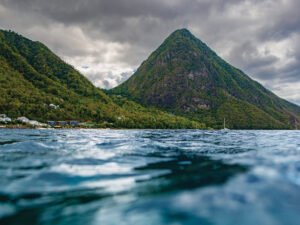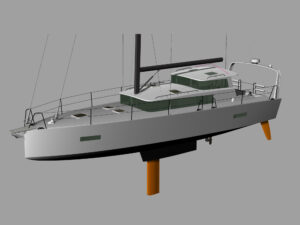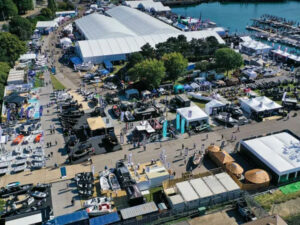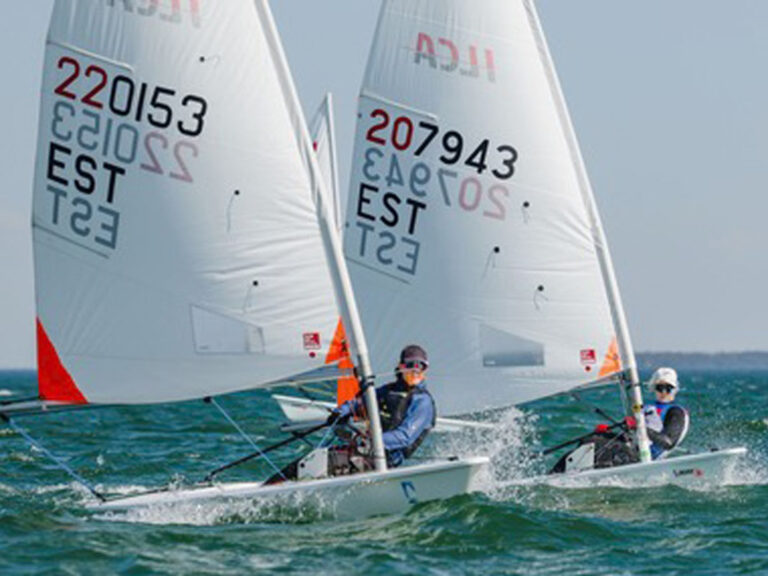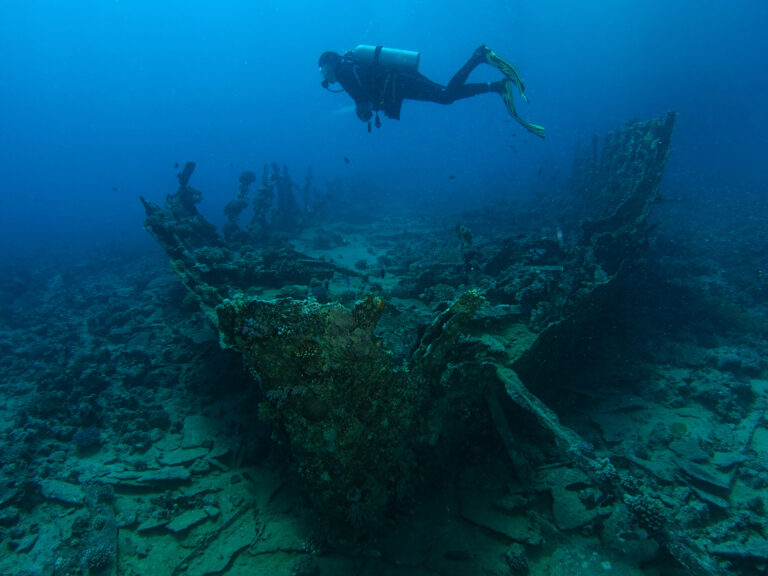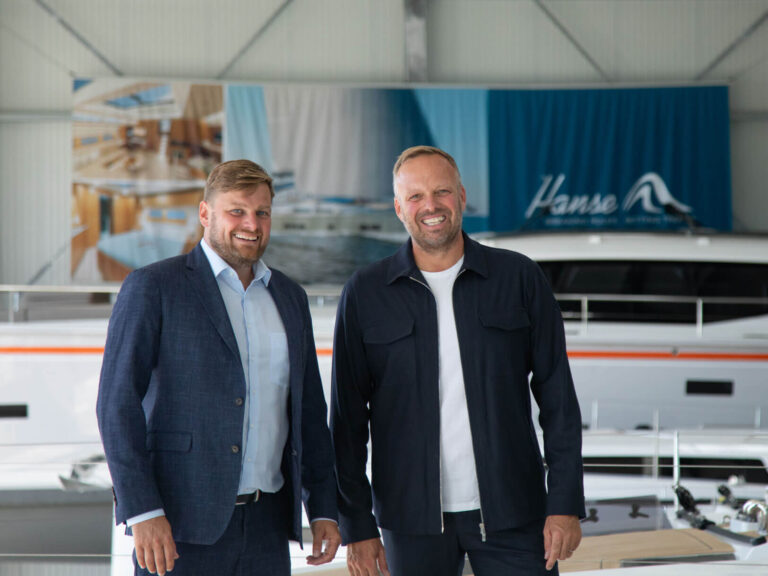Which way should we go? Throughout our lives, its the most important question we ask ourselves. Yet, when youre living on a cruising boat and traveling all the time, it seems like youre posing some version of that question almost every day. Luckily, out here, more often than not, the weather reduces some of the existential quandary and helps steer us toward our final destinations. Thats certainly how its worked for us this past week, as we weighed our options: Cartagena for a month, then the San Blas? Or straight to the San Blas?
| | Day after day, the wind howled from the east, finally making our decision for us.* * *| With 25 knots of easterly wind every day for a over a week, and no respite in sight (the high-pressure system thats parked north of us is predicted to squat just where it is for another week) we opted against a wicked beat to Cartagena, where the winds today were reported at 25 to 30 knots and the waves at 10-12 feet. (No thank you.) Instead, we decided for San Andres, 65 miles to the southwest of us, where we could do a major reprovisioning, then wait for the next window to open and scoot for the San Blas. This plan offers us a better wind angle in these intense easterly trades. So, onward.
The winds were forecast to ease up a bit the next day, so we went ashore, checked out with Mr. Bush, the local maritime agent, and kicked into action. I tied things down on deck, took down the awnings, and secured things below, while Douglas filled our jerries with fresh cistern rainwater ashore, then came back and worked on our navigation. This took him a little longer than usual, for two reasons. One, because were using a new handheld GPS with which were not at all comfortable yet; the “permanent internal battery” in our trusty old Garmin suddenly wore outwho knew that would happen?!and it turns out you have to send it back to the company for replacement! Two, wed just started using our backup computer, which is slower; also, having been stored for a year, its an unknown player, and on this unit our navigation program didnt want to work. (We also use paper charts for everything, because neither of us is willing to trust our boat or our lives to the capricious ways of anything electronic. Still, that electronic navigation program sure is sweet.)
| | Keeping his eye on the action, in a local bar in Providencia* * *| At 2100, just when we shouldve been hitting the sack, things went all to hell: The computer crashed, then would no longer accept information from the ships GPS. The new GPS was giving us fits and wouldnt give us our track back through the reef and buoys. Because it was a 65-mile passage, we couldnt leave in daylight and guarantee crossing through the reef before sundown, so we were leaving at 0300. Douglas, whos always a bundle of nerves before dark departures, couldnt get anything to work, and went thermonuclear. He swore. He whined. He raved. He threw erasers. Quite a performance, actually. I was reminded of something Carmeni, my Spanish teacher, had said to me a few days before, when I was struggling to answer in Spanish her question about what I liked best and what I liked least about Douglas. “Ahhhh,” she smiled when I tried to tell her how anxious he can get, _”¡Se ahoga en un vaso!”_ (he drowns himself in a glass of water). What a perfect way to put it. I thought of this now, and smiled too, although this didnt seem like the right moment to share this _bon mot_ with my beloved.
Then, in the normal way things work on boats, after we talked Douglas down from his tree about how we really didn’t need these damnably unreliable electronic crutches anyway, and just before we went to bed, the GPS kicked in inexplicably, and Douglas found the bent pin on the computer plug that was gumming up the works. Ah yes, all was right again with the world. We set our alarm for 0300. By 0330, smooth as silk, Ithaka puttered out of Providencia’s sheltered harbor and into the blackness of the open ocean. We turned to the west after passing the sea buoy, unrolled our 135-percent genoa, and felt it catch the 20 knots coming over our port transom. After sunrise, as we cleared the lee of the island, the swells arrived. Big ones. By 0700, I was feeling the first wave of seasickness I’d experienced in two years of cruising. Ugh! I looked over at Douglas, sitting across from me in the cockpit, and noticed that he’d gone pretty quiet and didn’t look so hot either. It was time to pop a Stugeron—our med of choice. You can chew it, the side effects seem minimal—it doesn’t make you crazy like scopolamine—and it begins working very quickly once it’s in your system, so you don’t have to take it until you’re feeling green. Douglas sweetly volunteered to be the unfortunate one to descend into the hot cabin and lurch around with the swells to dig it out, and that’s one of the things I forgot to tell Carmeni I like about him. Within minutes of chewing our pills, it seemed, we felt better, and we turned to watch Providencia falling away behind us.
| | Lacy yellow flowers cascade and bloom in this tree, a common sight in Providencia.* * *| We were taking with us wonderful memories of that place. By far, my favorite part of being in Providencia was spending time with Carmeni, my Spanish teacher. Every day, from 9 a.m. until noon, we talked, mostly in halting Spanish, about everything under the sun. When we got into something really interesting, but too complicated for me to follow, we talked in Spanglish (half English, half Spanish); when it got REALLY complicated, such as when we were talking about Colombian politics, or the drug situation in Colombia, we moved into English. Then, without a pause, wed swing back into Spanish again for the simpler stuff. She wasnt “teaching Spanish,” really, as much as she was giving me culture lessons, and I absolutely loved it.
Sometimes we sat in the shade on her pretty porch, overlooking the spectacular reefs; sometimes we puttered around in her kitchen, making cheese, or yogurt, or bread, and talking about native fruits and ingredients and how they’re used. One day, she invited Douglas and me over to join her husband Barrington and son Bruce for a traditional Colombian meal—a savory potato and chicken soup with the most wonderful flavors. Another day, we had Carmeni and Bruce out to Ithaka.
On one of our last days, Carmeni told me about a local “food sale” at someone’s house, which is how the islanders collect money for anyone in need. This food sale was to benefit a family who has a child with leukemia. I told our friends on Simba, Rotuma, and Sand Dollar about it, and the crowd of us bought tickets (so cheap), and then hopped on a colectivo (truck taxi) to join the crowd at the lunch. It was great fun to hang out, eat hearty conch stew and drink tamarind juice with the locals; the food and the company was mighty good. Carmeni and Barrington had needed a food sale the year before when their house burned down (an electrical problem) and they’d lost everything they owned; she said the islanders had collected enough money at the food sale for the Correas to buy and build all the framing for a new house on their old foundation. This is a real community.
| | Barrington, Bruce, and Carmeni* * *| Carmeni grew up in Bogota, attended the best university in the country, studied in Austria for a year, and graduated with a degree in speech pathology. She fell in love with Providencia and made it her home almost 20 years ago, teaches special-needs children at a local school (the perfect credentials to teach me Spanish), and does her own artwork in her free time. She was a font of information on the upcoming Colombian election: whos corrupt, whos straight, and what _las guerillas_ want, and what they stand for (it used to be human rights for the poor, now its drug money and power). She told me all about the “narcos” as she called them, Colombians involved in the drug trade”people who do sniffy-sniffy.” She said that although Providencia is a sleepy place, she hears the odd story about how gullible young men with powerful _lanchas_ get swept into the world of big money and high stakes. Just last week, Barrington told us a _lancha_ loaded with sniffy-sniffy, extra fuel, and powered by three 200-horsepower engines was intercepted by the U.S. Coast Guard in international waters; two teenage boys and a 17-year old girl were apprehended. Their destination? A rendezvous _in Florida_ with their American connection!
Through Carmeni, I got a perspective on all these thorny issues—a sense of how many American military ships were on drug patrol in this region of the northwest and southwest Caribbean (a lot); a glimpse of life on the complicated mainland of Colombia; and an image of how beautiful and rich in history, music, arts, and life is her homeland. She taught me, mostly, that it’s one thing to learn the language of a country, but that it’s another much more important thing to learn the culture of a country by living it. These days with Carmeni, sitting on her porch as Barrington continued building their new house around us, and savoring the aromas of whatever wonderful things she had on the stove, were a joy to me, and I feel I’ve made a real friend here.
| | One of the many secluded beaches of Providencia* * *|
Several hours into our sail, Douglass fishing reel started whirling wildly, the bungee went taut, and it shook me from my reverie. “You got one! You got one!” I called, waking him up from his off-watch nap. “A fish! Theres a fish on the line!”
Douglas shot up through the companionway and began hauling in whatever it was, while I got the gaff, the gloves, and the bottle of alcohol to kill it. Hand over hand (ours is not a conventional reel), he slowly brought in the fish. There was enormous tension in the line. Hed let it sit a bit, slip back a bit, and reel it in some more, hoping to tire the fish out. There was plenty of line out, and the fish had gone deep, so we couldnt see it for some time. We watched astern, hoping not to lose whatever it was, praying it wasnt yet another barracuda. He reeled, stopped, reeled, stopped, reeled. Then, the fish broke the surface and we were stunned. It was enormous. Douglas reeled some more, stopped, reeled, stopped, reeled. It seemed like forever; probably it was only about 40 minutes. Then, there it was behind us, an iridescent yellow and green, writhing and leaping out of the water on the hook, clearly a dorado (also called mahi mahi). Douglas reeled in the last long stretch of line till the fish was alongside, then he gaffed it and pulled it up, while I winced and poured the alcohol into its gills. Finally, it was dead. What a spectacular creature, I thought, and as usual I felt remorse for killing it, because with dorado, the gorgeous colors turn a mottled brown as it dies, the iridescence seems to evaporate from head toward tail, along with its spirit. Within half an hour, Douglas had cleaned and filleted it, loaded up a dozen zip lock bags, and we were eating sushi. It seemed impossible then to realize that only a few hours ago wed been seasick.
| | Douglas and the catch of the day* * *| Through all the drama of the swells, and the fish, and the shifting windsthey were now about 12-15 fluky knots from asternour Monitor, with a new modification, did all the driving, and kept us perfectly on course. Usually, in such fluky downwind airs with an opposing swell, wed have stopped using it, and wouldve had to drive by hand. (Ooof!) For the past couple months, Douglas had been studying how other cruisers with self-steering devices handled this situation, and had rigged up to our Monitor a very lightweight, electric, tiller-arm autopilot instead of the usual vane that sticks up in the air. (He explains it in detail at the end of this log.) This was the maiden voyage of the new rig, and it was working flawlessly. I was extremely proud of Douglas for figuring out this new system, for implementing it, and I was thrilled for him that it was working so well, especially as we were running out of erasers. Also, we loved not having to drive in these conditions, and our new system controlled the yawing much better than we could have.
Finally, around noon, we saw the low profile of San Andres emerging on the horizon before us. As we approached, the buildings and unmistakable shape of hotels became clear, and only the turquoise reef and boiling white water stood between us and there. When we were perpendicular to the GPS position of the sea buoy, still a few miles away, we gybed and headed toward it, flying along at about 7 knots. Once we passed the buoy and were inside the reef, we turned on the engine, rolled in the genoa, and began making our way down the well-buoyed three-mile channel into San Andres. Our anchor was down by 0230a safe, swift passage behind us. Ahead of us lay supermarkets, gourmet stores, restaurants, fast internet connections, fancy bakeries, movies, ice cream, and hardware stores, and I was pretty excited for a fix of such pleasures.
| | The weather is always the one to determine what door we pass through in the cruising life.* * *| Itll be interesting to see how long the wind keeps us here and what the weather will bring. Already six tropical waves have appeared on the weather faxes over the past week or so. In and of themselves, they need not be a big concern; the barometer falls a bit, and sometimes stronger wind is noted as the tropical wave passes over you. Sometimes theres rain; sometimes there isnt. Cruisers watch them like hawks, however, because tropical waves spawn hurricanes. Yes indeed, its that season already! The rain is coming more often now. We dont worry so much about our water supply; its going to be getting replenished regularly. So, as always the weather is the major factor, calling the shots, dictating how long we stay, and when well move on.
e-mail the Bernons: [email protected]
| NEWS AND NOTESStugeron For Seasickness: I first heard of this highly effective seasickness medication when I was working at Cruising World and interviewing a lot of the sailors competing in the singlehanded around-the-world races, many of whom swore by Stugeron. Its produced by Janssen-Cilag in England. As its not yet approved by the U.S. Food and Drug Administration, it isnt available in the States, but you can get it easily pretty much anywhere else. We bought several boxes in Bermuda a few years back, and also weve seen it for sale over the counter in pharmacies down the Central American coast. The active ingredient is cinnarzine. Its only listed side effect is possible drowsiness, and they recommend that you dont take it with alcohol, anti-depressants, anxiolytics, or if pregnant or operating heavy machinery (like, say, a sailboat?). Other than a little dry mouth, weve had no side effects and much prefer it to other seasickness medications weve tried. _Bernadette_Down-wind and Light-Air Modifications To Our Self-Steering: The beauty of self-steering vanes is that they use the power of the water and the wind to steer the boat with much less effort than a person uses when muscling a weather-helm tiller or a wheel; and unlike powerful electric autopilot systems, which are extremely amp-hungry, self-steering systems consume none at all. Simply put, our Monitor is the best driver we have on this boat! The drawback, though, is that in light airs and when running dead downwind, steering vanes are harder to tweak and control because not as much oomph (wind power) is being exerted against the vane and therefore not as much push is being applied to the in-water rudder. Many cruisers get around this inconvenience by taking down the airvane in those conditions (or when steering a magnetic course) and installing a relatively inexpensive and lightweight electric tiller-pilot that is designed for much smaller sailboats. The tiller-pilot does what the wind would do: exert modest pressure to turn the paddle and steer the boat. |
| | The tiller-pilot is attached to the higher stern rail and to the a small custom “airvane”. We attached the tiller arm at the midpoint of the its throw, so that it can extend an equal distance in each direction.* * *| The combination of small tiller-pilot and self-steering system is enormously powerful. Weve met several people who used this same system in boats much larger than ours to steer themselves across oceans. (Another advantage is that the continuous power draw is a minuscule .5 amps!) In the little harbor of Providencia, where in three weeks we saw maybe eight boats total, some version of this combination of tools was installed on Monitor, Aries, and Sailomat windvanes, on cruising boats ranging in size from 36 to 52 feet, and they all loved it! I can see why. On our run from Providencia to San Andres, in a sea full of funky rollers and a following wind, we sailed with only a genoa, and for 11 hours the tiller-pilot and the Monitor held hands without so much as a tweak from us. Neither Bernadette nor I could have done half so well.
| | Our aluminum baby-tiller locks in place inside the rudder. The links of the chain hook over a stainless bolt that comes through the tiller. The whole operation can be adjusted or removed in seconds.* * *|
The other change we’ve made recently regarding self-steering is to use a short (36 inches) aluminum, stub-tiller that fits into a slot at the top of our external rudder. This reduced the resistance in the Monitor’s steering lines because they go through two fewer blocks than when we attached them to the wheel-mounted system. In some ways it’s the best of both worlds: the relative comfort of a wheel for driving and the convenience of an easily detachable tiller for self-steering. We find that setting and adjusting the Monitor is infinitely easier now—and naturally we wish we had done this two years ago when friends first suggested it to us. Duh! —Douglas
_
_
| | Bernadette and Carmeni, on the porch* * *| Spanish Lessons In Providencia: Few _norteamericanos_, other than cruising sailors, make their way to Providencia, so its a wonderfully laid-back place for a private getaway! Although flying there is very expensive; all connections are through mainland Colombia. Anyone visiting Providencia whod like to meet with Carmeni Correa can contact her by telephoning 5148460 or e-mailing her at [email protected]. Her hourly fee was only about $3. _Bernadette_
Ithaka’s Fishing Reel: This is a homemade rig we picked up from a fellow on the Rio Dulce who’d just moved to a formidable Penn International reel and was willing to part with his low-rent operation for only $10. I leaped at it! I much prefer this design to the plastic yoyo I’ve been using, because this can be mounted permanently on the rail and has a built-in locking-brake (the red knob) that can be slacked so that a fish can run a bit and then be jerked in to set the hook. (Also it gives me something to play with when we’re underway.) I rigged the new reel and the yoyo (which is simultaneously in use on the other side of Ithaka) with 200-pound test and three feet of wire leader so sharks and barracuda will be less likely to bite through it. On the new reel, the monofilament runs from the reel through a small block on a higher rail (approximating a short-arm downrigger) and then to the water.
| | This home-made fishing reel holds about 80 yards of 200-pound test monofilament and feeds us regularly!* * *| We also attach a bungee cord (a strike absorber and earlywarning system) from the monofilament to a lower point on the deck. When the bungee becomes taught, we know theres drag on the line. A friend of ours with a similar design put a small goat bell on his that notifies him when its time to get to work. We caught the mahi mahi with a short octopus lure, 8 ounces of weight and a number 10 mustad hook. In my fits of excitement I forgot to weigh this guy, but I did measure him out flat on deck at 53 inches, and we know he provided 14 ample dinner portions for us and friends.
For anyone going cruising, Scott and Wendy Bannerot’s The Cruiser’s Handbook of Fishing is the bible. I read and reread sections of it constantly. If you live inland and want to fantasize about all the gotta-have-it gear, go online with Captain Harry’s fishing supplies (www.captharry.com). If you want to see the absolute to-die-for-outrigger-trolling set up that I covet beyond belief, check the Australian made Alvey reels on www.alvey.com. (Yikes, as I reread this paragraph now I better understand a character in Wallace Stegner’s brilliant Crossing to Safety who said one day: ” I now have the insufferable confidence of a small success.” —Douglas

